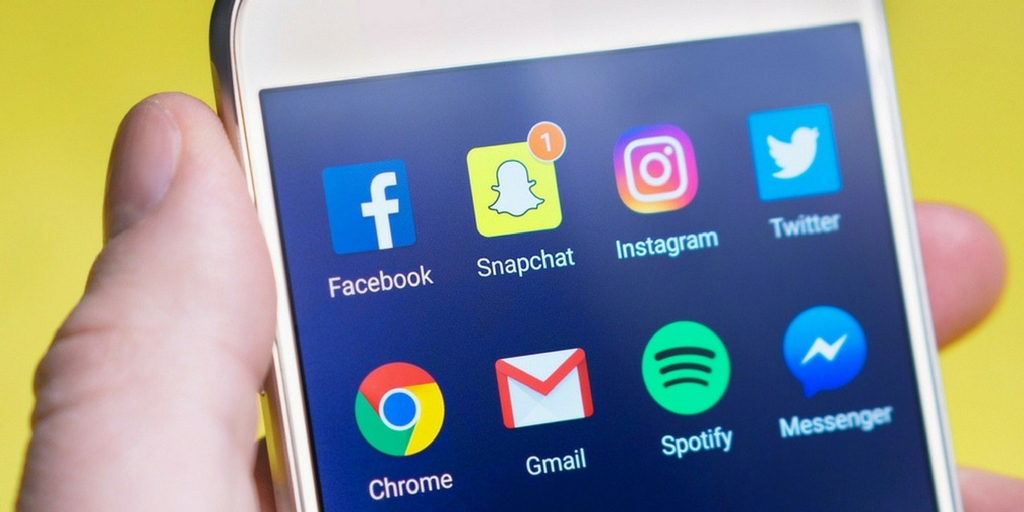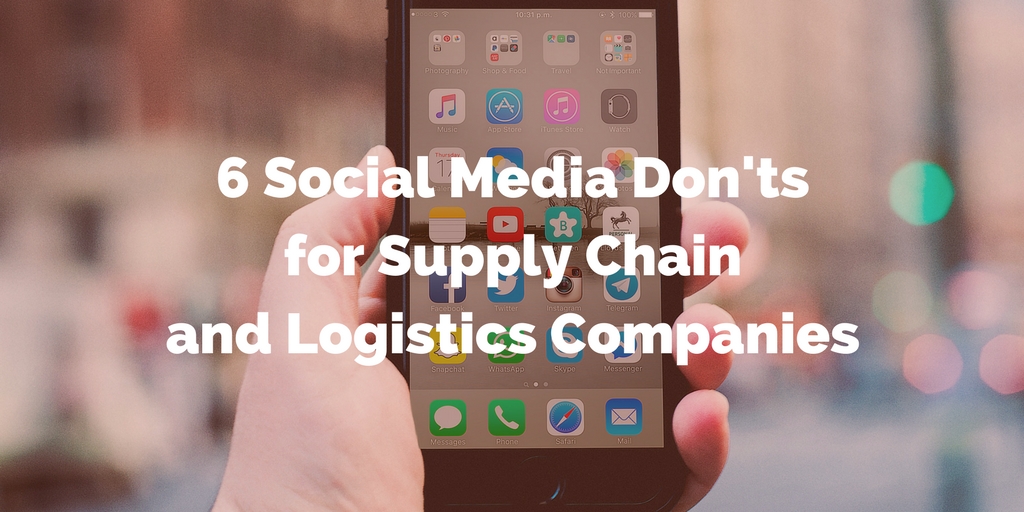
by Fronetics | Mar 26, 2018 | Blog, Content Marketing, Logistics, Marketing, Social Media, Supply Chain
Social media scheduling tools can make social media management much easier while improving your bottom line.
Managing your business’ social media accounts might sound like a simple task — a fun one, even. But once it falls on your plate, it won’t take you long to realize: it’s a lot of work. That’s not to say that the work can’t be enjoyable. But the sheer volume can be overwhelming.
For example, Fronetics recommends posting to Twitter 40 times a day. Imagine your productivity levels if you needed to stop what you’re doing 40 times a day to craft and post a tweet. You get the picture.
The beauty of marketing automation
Here’s where marketing automation can help.
Social media scheduling tools can make your job much easier — and improve your bottom line. In fact, according to HubSpot, businesses using marketing automation to nurture leads increased qualified leads by 451%.
Essentially, social media scheduling tools let you plan and schedule content across your social networks. There are plenty of free and paid options for you to explore, though two of our favorites are HubSpot and Hootsuite.
HubSpot’s comprehensive CRM and marketing platform includes the ability to automatically post to social media when you publish content, as well as in-depth analytical tools for determining the best time to post to social media platforms. Monitor social mentions and link your social media activity with larger marketing campaigns to determine ROI.
One of the most widely used automation tools on the market, Hootsuite lets you keep track of various social media channels at once. It also helps you perform brand monitoring, letting you know when you brand is mentioned, and what your customers are saying.
3 tips for using social media scheduling tools
Hopefully, you’re starting to get excited about the possibilities of automating your social media marketing tasks. Here are a few tips to keep in mind as you move forward.
1) Timing is everything
Good social media scheduling tools will also let you monitor the times of day when people read your content and interact with your brand on social media. Make use of these important metrics and schedule your content strategically for days and times of maximum exposure.
2) Diversify
Keep in mind that someone who follows you on Facebook is likely to also follow you on Instagram and Twitter. For the savvy social media marketer, this means that content should be optimized for each platform, rather than just repeated across multiple platforms, at the risk of boring your followers.
This doesn’t mean you have to reinvent the wheel each time you schedule content, but play to the strengths of each network. For example, Facebook allows more text, while Instagram is great for eye-catching images or stories.
3) You’re not off the hook
Automation is a highly effective tool for social media management — but it’s just part of the picture. Used properly, it should act as a supplement to your social media activities, like reading and replying to audience comments and interacting with your community.
What social media scheduling tools do you like?
Related posts:


by Fronetics | Dec 13, 2017 | Blog, Marketing, Social Media
Here are our 10 most-read social media posts of 2017.
Today, more than ever, companies are turning to social media to engage with customers and reach new audiences. Brands are using newer technologies to push content marketing to new levels. And it’s working.
Looking at this list, I notice the popularity of posts about how to utilize social media to grow leads and close deals. Knowing when and where to post isn’t enough; with constantly changing platforms, companies need to stay on the pulse of social media to stay ahead of their competitors.
At Fronetics, we hope to serve as an educational resource for companies within the logistics and supply chain industry. Always feel free to reach out and ask us a question or request a blog post if there is a topic about which you need more information. In the meantime, here are the 10 most-read posts about social media from our blog in 2017.
Top 10 social media posts in 2017
1. This is How Often B2B Businesses Should Post on Social Media
Keep these best practices in mind when determining how often to post to social media. It’s not enough to just create interesting and pertinent content; you have to put it out there to reach your target audience. Moreover, the content needs to be delivered consistently over time, at the right time, and in the right place. Read more.
2. 4 Tools to Determine the Best Time to Post on Social Media for Your Business
Find out when your target audience is most active on different social media platforms by using these 4 online tools. It’s not enough to curate content for your social media platforms. Today’s social media users expect fresh, innovative ideas around the clock. And when this content is being shared is just as valuable as what is being shared. Read more.
3. Social Benchmarking: How You Know You’re Killing it on Social Media
Rival IQ’s Danica Benson discusses the importance of social benchmarking and offers three steps for getting started. Benchmarks are key when interpreting data. Organizations of all kinds — large corporations, small privately-owned business, nonprofits, and even sports teams — need to measure their performance to see if they’re efforts are leading to success. Read more.
4. The Best Time to Post on Social Media: A Comprehensive Study
When you are posting on social media could be as important as what you’re posting, and this CoSchedule study attempts to determine the best time to post. Timing is everything. And that statement especially holds true when it comes to posting content to social media. There’s no point in putting in the time and effort to create informative blog posts, inspirational tweets, or captivating Facebook posts if you’re not getting the most exposure you can out of your social media outlets. Read more.
5. Instagram Stories: How the Supply Chain Can Use Them to Engage Prospects and Customers
Instagram Stories offer an on-trend platform for delivering targeted content to B2B buyers and building brand awareness with potential customers. If you haven’t considered using Instagram as part of your social media marketing program, it might be time to change your mind. Read more.
6. 7 Must Follow Twitter Accounts for the Supply Chain Professional in 2017
Turn to these 7 Twitter accounts for news, insights, and thought leadership in the supply chain space. Twitter is a platform for socializing, entertainment, breaking news, lead prospecting, and much more. But Twitter is only as useful as the people you follow. So how do you choose between the 317 million monthly active users? Read more.
7. Leveraging Social Media in the Consumer Electronics Industry
Here are two examples of consumer electronics companies leveraging social media to reach their target audiences, build brand awareness, and drive sales. Supply chain businesses understand that social media is an important marketing tool in today’s marketplace. The consumer electronics industry is no different: Participating in social media has never been more necessary. Read more.
8. #LeggingsGate: The Importance of Emotional Intelligence in Social Media Management
United Airlines failed to apply emotional intelligence to its social media management and will continue to suffer the consequences. The recent #LeggingsGate controversy — in which a United Airlines gate agent refused to allow two young girls flying on friends-and-family tickets to board a flight because they were wearing leggings, which violated company dress code — really got our office talking. The incident is a great example for all businesses on the importance of emotional intelligence in social media management. Read more.
9. Where on Social Media Will Competitors Be Next? Trends in Content Distribution Channels
Recent surveys show video platforms are the next big focus for marketers in terms of content distribution channels. We’re big advocates of social benchmarking against your competitors. But, just as much, we are always thinking ahead, trying to figure out where the industry is going next. It’s important to get ahead of the trends so that you can be right there leading the pack. Read more.
10. Facebook Breaks 2 Billion Users, Instagram Crushes Snapchat, and more Social Media News
In July’s social media news, platforms saw a rise in daily active users and broke records in more than one category. Once thought to be a passing trend, social media is nowhere near slowing down in terms of growth. Next Web reported that India has taken over as the largest audience of Facebook, beating out the U.S. with over 241 million active users. Active users in India are up 27% in the past six months, twice the rate of U.S. users. Read more.
Related posts:


by Fronetics | Aug 23, 2017 | Blog, Content Marketing, Marketing, Social Media
In keeping with social media etiquette for businesses, you really shouldn’t do these things.
It’s easy to get bombarded with suggestions on how to interact with your customer base on social media. Amid the endless barrage of ideas for what to do, it’s worth remembering that not all social media engagement is equal — sometimes, it’s just as important to remember what not to do. (See for example #LeggingsGate.)
Let’s talk about the specifics of keeping your proverbial foot out of your business’ mouth online. Take a look at the list below of 6 don’ts for B2B businesses.
6 social media don’ts
1) Don’t assume that just because you’re online, offline rules of communication and conduct don’t apply.
It may seem obvious, but it’s all-too-often forgotten. This is a good rule, and an easy metric by which to judge any content before posting: Your interactions online should measure up to professional interactions you would have in person.
2) Don’t re-post, re-tweet, re-gram, or re-share external content without a thorough check first.
Re-posting content that’s of interest to your business’ audience is a great way to promote discussion and engagement. But don’t get sloppy. Remember that even if content didn’t start with you, if it’s posted on your company’s social media accounts, it represents your business. Make sure content is well-researched and from reliable sources. Want to re-post something controversial? Just be sure to include a disclaimer or explanation in your post.
3) Don’t forget that emotional intelligence is just as important for businesses as for individuals.
Never forget that behind every social media account is a human being. The bottom line: “bring emotional intelligence to your social media management. Take the time to address any issues with compassion and understanding.”
4) Don’t ignore comments.
Social media is all about engagement with your audience and potential customer base. Yes, responding to every comment takes time and resources, but it is well worth the effort. A comment ignored sends the message that you don’t feel that your customer’s question, concern, or observation is important. Use comments as the opportunity they are to interact with your followers, and show them that you are ready and willing to address any issues they may have.
5) Don’t delete negative comments.
Once it’s online, trust that people have seen it. Deleting a complaint will only make your business appear insensitive and evasive. Addressing negative comments demonstrates that your company is proactive about resolving issues and taking care of your customers.
6) Don’t forget the basic principals of common sense and good judgment.
This one comes from John P. David of David PR Group. It seems like another obvious one, but people and businesses violate this principle all the time. Always have at least two pairs of eyes on everything you are going to post, and anything remotely controversial should be thoroughly vetted by as many people as necessary. When in doubt, David says, don’t post.
If your company has committed any of these social media don’ts in the past, don’t panic. These platforms offer an ideal place for renewing and tweaking your image. Invest in the creation of a good social media policy. Don’t give the enormously important task of social media management to a summer intern. And, for goodness’ sakes, remember you’re a human talking to other humans.
Related posts:


by Fronetics | Jul 17, 2017 | Blog, Content Marketing, Marketing
Outsourcing doesn’t have to be an all-or-nothing thing. Considering parsing off these marketing tasks based on internal resources and expertise.
Everyone needs a little help sometimes. That’s particularly true when it comes to B2B marketing. In fact, 52% of B2B marketers attribute stagnancy in success to not having enough time devoted to their marketing programs, and 49% attribute stagnation to content creation challenges.
Outsourcing marketing allows you to focus on insourcing your core competencies while delegating specialized tasks to external experts. And it’s important to note that you don’t have to outsource ALL of your marketing. Choosing several areas beyond your staff’s expertise or that are particularly time-consuming can help you improve your marketing efforts and take stress off an overworked internal marketing team.
Here are seven areas where you might consider outsourcing.
7 marketing tasks to outsource
1) Website development and design
Sure, you could build a perfectly functional website from a template, or have your techy nephew Chris put something together while interning with your company over summer break from college. But this is one area we feel strongly is best left to the pros.
A sleek, modern website that’s easy to navigate makes a big statement about your company. The overwhelming majority of buyers will visit vendors’ websites while researching and making purchasing decisions. The experiences they have while browsing contribute to their overall perception of the companies. Imagine how poor site organization, outdated functionality, or technical problems reflects on your brand.
In addition to creating a well-functioning site, the right developer/designer brings niche specializations to the table as well, such as usability engineering, search engine optimization, and more. Capitalizing on a professional’s knowledge in these areas can make a big difference in web traffic, visitor engagement, and, ultimately, lead generation and sales.
2) Social media management
Social media management sounds easy and fun. But if this task has ever fallen on your plate, you know the exact opposite is true. It can be one of the most time-consuming, frustrating tasks your business faces — and that’s before you realize you have to keep up with all the latest trends and platforms to be effective.
Outsourcing social media management to a knowledgeable partner can free up hours of your day and improve your social engagement and reach. These firms know what works and what doesn’t because they’re active every day on multiple platforms managing accounts for multiple clients.
And it’s not just posting every now and then. A good social media partner will craft and publish original content, but they’ll also curate great content from relevant sources, like industry partners. Outsourcing these tasks to the pros helps build a strong following and brand awareness for your company.
3) Content creation
Blog posts, emails, case studies, white papers, ebooks, webinars, marketing collateral, newsletters — how much content is your staff responsible for creating on a weekly, even daily, basis? Is it the kind of informed, quality material you’re proud of?
Content creation is one of the easiest marketing tasks to outsource. It will immediately give your staff back hours into their days. And the right outsource partner will produce high-quality, SEO-optimized content that will drive traffic, build trust with leads, and persuade buyers.
4) Videography
Video is the hottest content platform right now. I’ve written extensively about the opportunity supply chain and B2B businesses have with video, even if it’s just point-and-shoot iPhone video interviews with subject-matter experts. But professionally produced videos open another level of potential.
There are many firms and individuals that specialize in videography, and you’d be surprised how affordable and quick they can be. Or, some content creation partners also do video or can find a third-party videographer and manage the process for you.
5) Graphic design
This is one area where you really can’t fake it. Professional designers are worth their weight in gold, particularly when you need a professional document or graphic in a crunch. They can turn your documents into beautiful, easy-to-read brochures, or make dry technical data into eye-catching infographics. You may be savvy with Word templates, but they’ve got nothing on the pro designers.
6) E-commerce
Any sort of back-end system will work more smoothly if you are able to outsource the project to an agency already familiar with implementing and running specialized platforms. A smooth and well-thought out e-commerce process without any hiccups leaves customers happy and more likely to return.
7) Strategy and execution
Did you know you can leave marketing strategy to the experts? The right partner will work closely with you to develop a strategy that closely aligns with your business and marketing goals. They can even execute the strategy for you, as well, and then provide you with regular updates on how it’s working. This kind of results-driven approach will ensure you’re stretching your marketing dollars to the fullest extent and getting the kind of results that will grow your bottom line.
Related posts:


by Fronetics | Apr 4, 2017 | Blog, Current Events, Marketing, Social Media, Strategy
United Airlines failed to apply emotional intelligence to its social media management and will continue to suffer the consequences.
The recent #LeggingsGate controversy — in which a United Airlines gate agent refused to allow two young girls flying on friends-and-family tickets to board a flight because they were wearing leggings, which violated company dress code — really got our office talking. For one, many of us have young children, whose wardrobes consist mostly of leggings. But also, the incident is a great example for all businesses on the importance of emotional intelligence in social media management.
Emotional intelligence is the capacity to recognize emotion in others (and oneself), to discern between different feelings, and to label them appropriately. In other words, emotional intelligence is the ability to adapt behavior and communication according to feelings — either yours or those of other people.
Going online with emotional intelligence
It is easy to see the correlation between emotional intelligence and the workplace, where teamwork and communication are key to success. But also, companies need to understand the importance of emotional intelligence in social media.
In today’s day and age, prospects and customers are constantly sharing their thoughts and opinions online. This can be a huge benefit when tweets and posts are in your company’s favor. But what happens when the tables turn?
How you handle negative online comments says a lot about your brand. And, just as you would with an in-person customer complaint, bringing a little emotional intelligence to communication over social media is imperative.
Unfortunately, this is where United Airlines fell flat.
Where United Airlines went wrong
Sure, it was probably a bad decision on the gate agent’s part to block the girls from boarding. A passenger waiting at the gate began tweeting about the situation and how poorly it was handled — which prompted Twitter users to send hundreds of tweets to United Airlines complaining.
But the company’s cold response to the outrage is what really stoked the fire. Instead of apologizing, or even pretending to listen to what people were saying, United’s corporate social media account took on an air so… corporate. It coldly tweeted quotes from the company handbook. It flatly defended the gate agent and insisted the company had done nothing wrong. Technically true, emotionally unintelligent.
United Airline’s lack of compassion caused the incident to snowball and go viral. Well-known advocates, influencers, and celebrities joined in the chorus of voices speaking out against the airline. And while United gained absolutely nothing by its actions, it lost the support of thousands (if not hundreds of thousands) of potential customers, who will choose to fly with another carrier in the future.
What UA could have done differently
It is always important to show your customers that you understand their concerns and that you want to improve their experiences. United Airlines could have acknowledged the severity of the situation, told customers that it would review outdated policies, and made changes accordingly. Instead, United came across as a company that doesn’t prioritize their customers — or employees, really.
Understanding that the general public is scrutinizing every word posted to social media should help cultivate your company’s response to complaints. Responses should be timely and empathetic. People want to know that you are listening and they are being heard. And they want to know that they are spending their hard-earned dollars with companies that care about them.
Bring emotional intelligence to your social media management. Take the time to address any issues with compassion and understanding. Learn from United Airlines’ mistake, and don’t lose customers over the desire to be right when you could be empathetic instead.
Related posts:









